Richard Fortus: “We’re pushed and inspired by our own tone... We’re gonna be playing better because we’re hearing what we want to hear”
The GN’R veteran talks hunting down guitars, nailing his tone and sharing a stage with Slash
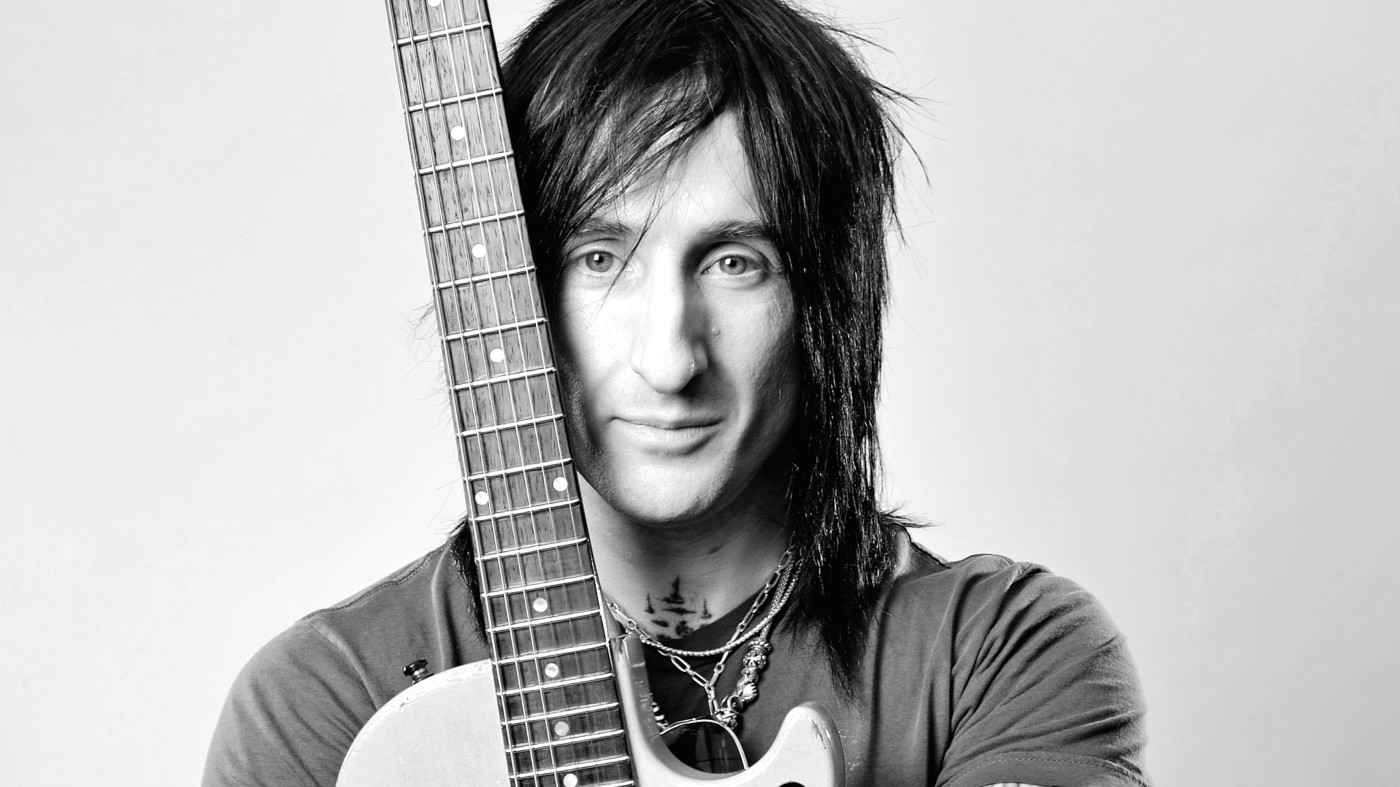
Richard Fortus is at his home in St Louis, Missouri. He’s recently returned from a spate of club gigs with electronic rock experimentalists Headtronics, and is currently in the midst of producing the new album for The Psychedelic Furs, before heading back out on the road again later this year for an arena tour around the United States and Mexico with Guns N’ Roses, with whom he’s been playing since 2002.
While being immersed in such a broad variety of gigs over the years, Richard has constantly strived to refine his tone and find inspiration with new sounds - often in the form of new guitars. After all, “We’re pushed and inspired by our own tone,” he reminds us. We swung by for a rare insight into some of his favourite instruments and was treated to a jaw‐dropping collection that could rival the inventory of many a vintage guitar shop...
How did you amass such a great collection of guitars and amps?
It just seemed to have happened. I guess I have a problem!
“It just seemed to have happened. I guess I have a problem! But I figure it’s better to put your money into what you know, investment wise. I follow Joe Bonamassa’s posts on Instagram and I’m just amazed at his collection. It’s staggering. How one person can amass that kind of collection is mind‐boggling. I don’t have the resources to go for the big‐ticket items; I try to turn Axl and Slash on to the stuff that I can’t afford.”
It’s fair to say Slash has a fondness for ’Bursts...
“He’s got a few, including the first ’Burst ever made [serial number 8 3096 shipped on 28 May 1958]. There were two made on that day, but there’s no documentation as to which one came first. Gibson did a replica of it [Custom Shop Slash 1958 Les Paul ‘First Standard’ #8 3096]. It’s funny, I went to soundcheck one day and heard him playing, and was like, ‘Wow! What is going on with his rig?’ It sounded noticeably different.
“I was like, ‘Dude, you brought that out?!’, thinking it was the original. He said, ‘Oh! This is a replica Gibson just made. They just sent me one.’ I asked him, ‘How accurate is it?’ because it sounds so different from his normal guitars - probably because it doesn’t have Seymour Duncans in it - and he said, ‘It’s really, really close. I can tell, but if it was handed to me on a dark stage, I don’t think I’d be able to tell the difference.’
Get the MusicRadar Newsletter
Want all the hottest music and gear news, reviews, deals, features and more, direct to your inbox? Sign up here.
“I really wanted to buy one, so I was like, ‘Can you get me one?’ and while we were standing on the stage, he called up the Gibson rep on the phone and asked him to hold one for me.”
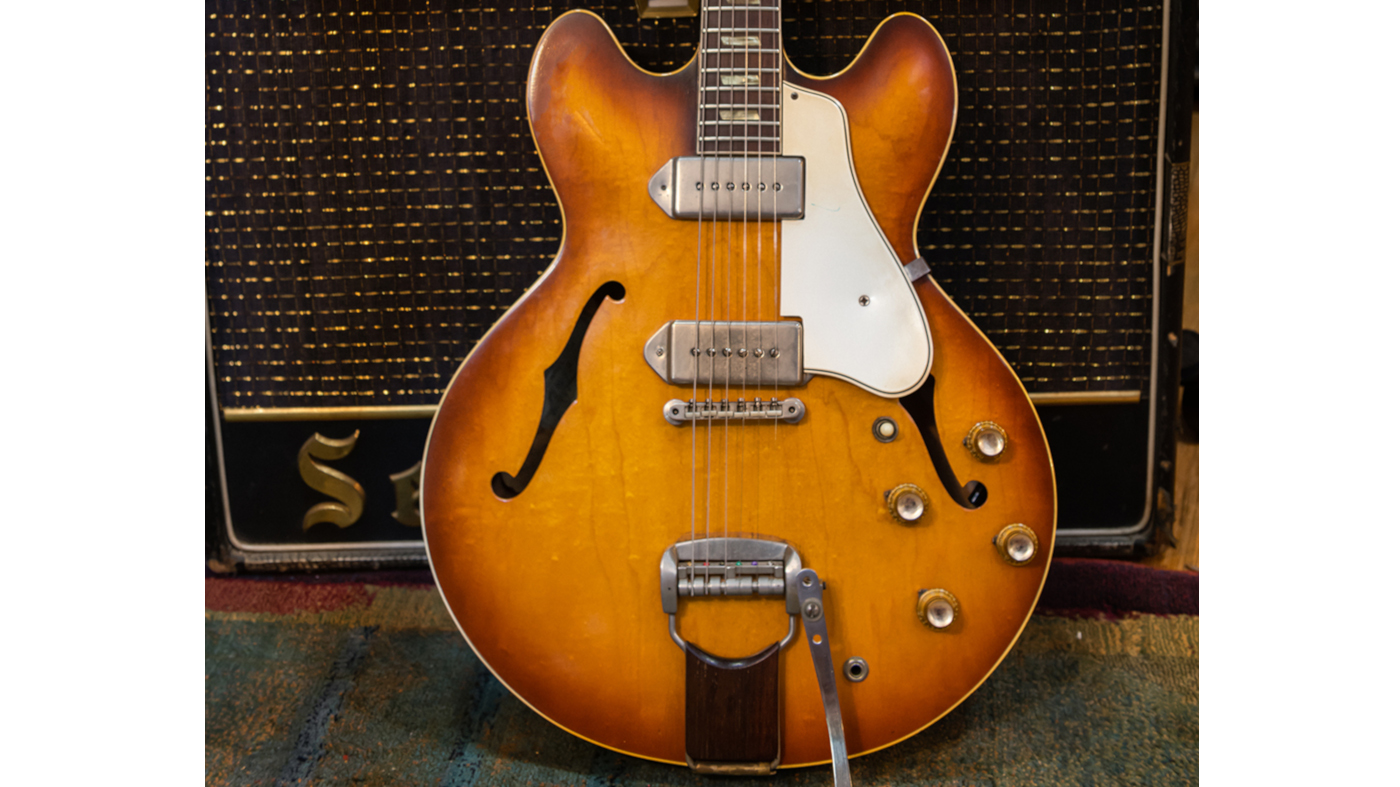
1964 Epiphone Casino
“When I bought this guitar, the neck pickup was considerably hotter than the bridge. I swapped them around and now it sounds amazing. I have a [Gibson] ES-330 as well, but this Casino sounds better”
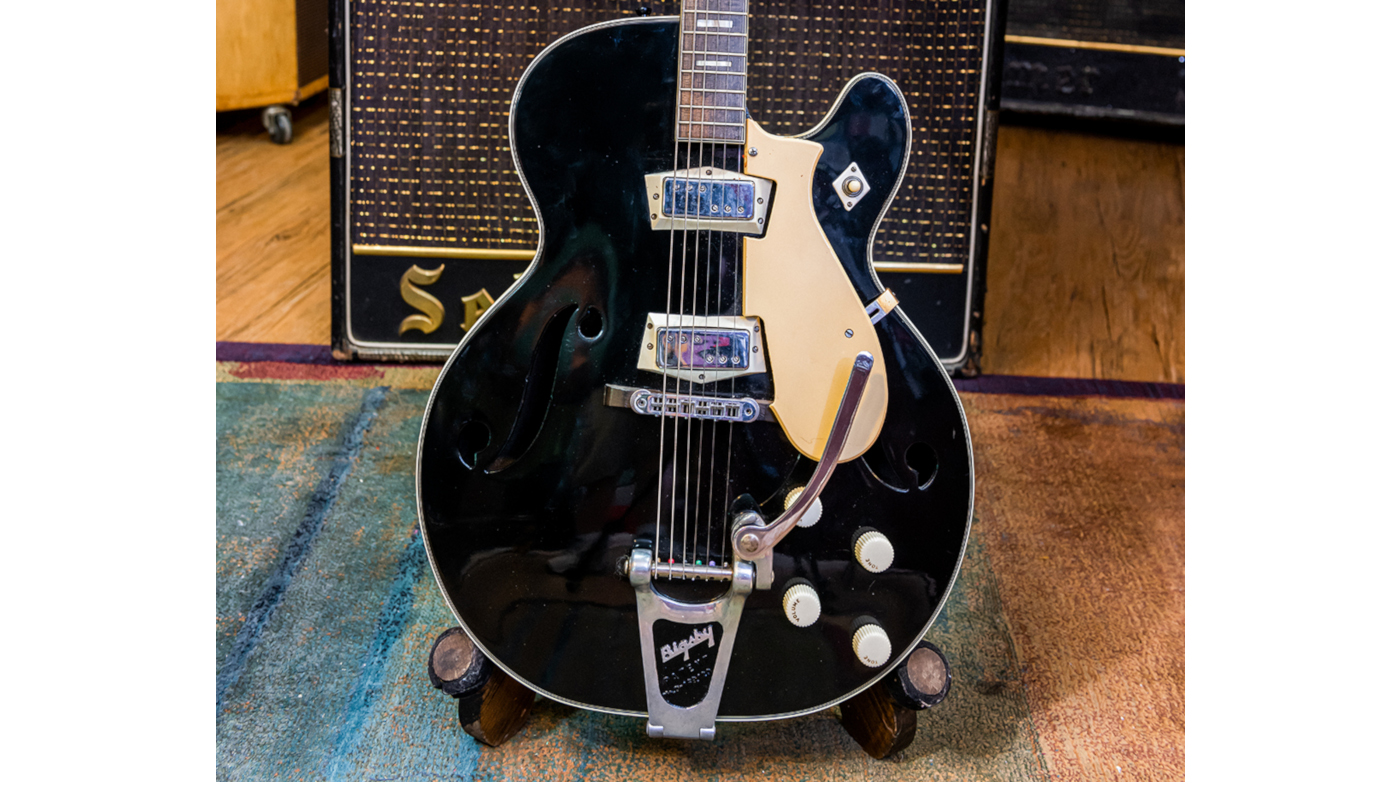
1960s Silvertone 1446L‘Chris Isaak’
“We used this guitar a lot on The Psychedelic Furs new album. These are just great sounding guitars. I love it!” This model has stock Gibson-made mini-humbucker pickups and Bigsby B3 vibrato
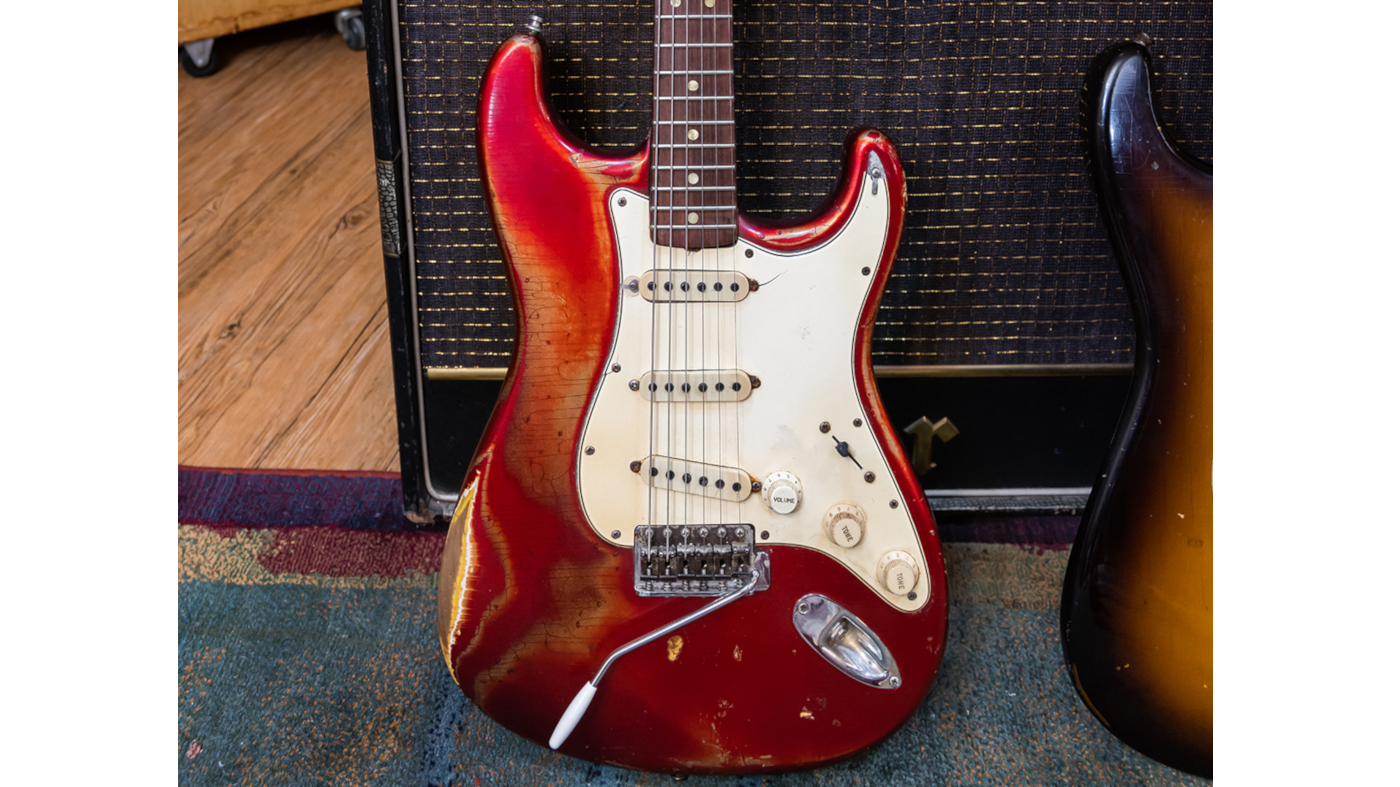
1966 Fender Candy Apple Red Stratocaster
“I bought this guitar from the original owner who was a bit of legend in Minnesota. He bought it in ’66 and played it every day - it looks like it and it feels like it!”
Picking up
Do you play any other Gibson Custom Shop guitars?
“I really like the look of the ’68 Custom reissues they were doing years ago with the nickel hardware [Gibson now offers the 1968 Les Paul Custom Reissue with gold‐plated hardware], but I had to go through quite a few to find one I liked. They were so inconsistent. Gibson sent them to me and I didn’t like them, so I sent them back. But I didn’t give up on it; I ended up going to Nashville and found two that I love.
I’m a big P‐90 fan. I love [ES‐]330s and Casinos, but, sadly, it doesn’t really work for me with the GN’R setting
“I also have two original one‐piece‐ body ’68 [Les Paul] Customs. I know they’re very valuable because it was the first year and they have the longer neck tenon. But, honestly, I prefer the sound of the reissues. [The originals] have those thin necks from ’68 and I don’t get along well with those; it just doesn’t sound right on a Custom. To my ears, a bigger neck makes for a bigger tone. Having said that, I don’t hate it on an Epiphone. I love Casinos - I have a ’64 that has a thin neck, but it sounds fantastic.”
Do you like the sound of P-90s?
“I’m a big P‐90 fan. I love [ES‐]330s and Casinos, but, sadly, it doesn’t really work for me with the GN’R setting because it seems to fight for sonic territory too much with Slash’s tone. [P‐90s] can be quite throaty, they have that throaty sort of vocal quality to them, and that’s where Slash’s tone really sits. I tried a few different things out and it seems lower‐output humbuckers and lower‐gain amps work well, so that’s what I use.
“Filter’Tron Gretsches work great because they keep out of [Slash’s] sonic territory and seem to blend well with his tone. Teles work well, too, but I’ve mostly been using the Leo Scala guitars and Gretsches. The Scalas all have lower‐output pickups and, fortunately, I have the ability to try stuff out with Leo. We’ll go through five or six different pickups per guitar until we find the right one. It’s been a labour of love to meticulously keep going back and forth. It’s fun to work with someone who is as equally driven to find the perfect match.”
What pickups do you tend to use in the Scalas and Gretsches?
“I’m really into a pickup that Rob Timmons at Arcane developed using an Alnico 8 magnet. It’s a very strong magnet, but the pickup has very few windings, so the output is lower. It has a very open, broad sound to it. It’s not too compressed or midrange‐y sounding, and I love the way it complements Slash’s tone. Arcane is the best. They pretty much make every pickup I use now. They have all the sonic elements I love about the Filter’Tron but they’ve been brought up to around 7.5 to 8kohms [original vintage Filter’Trons typically measure around 4kohms DCR].”
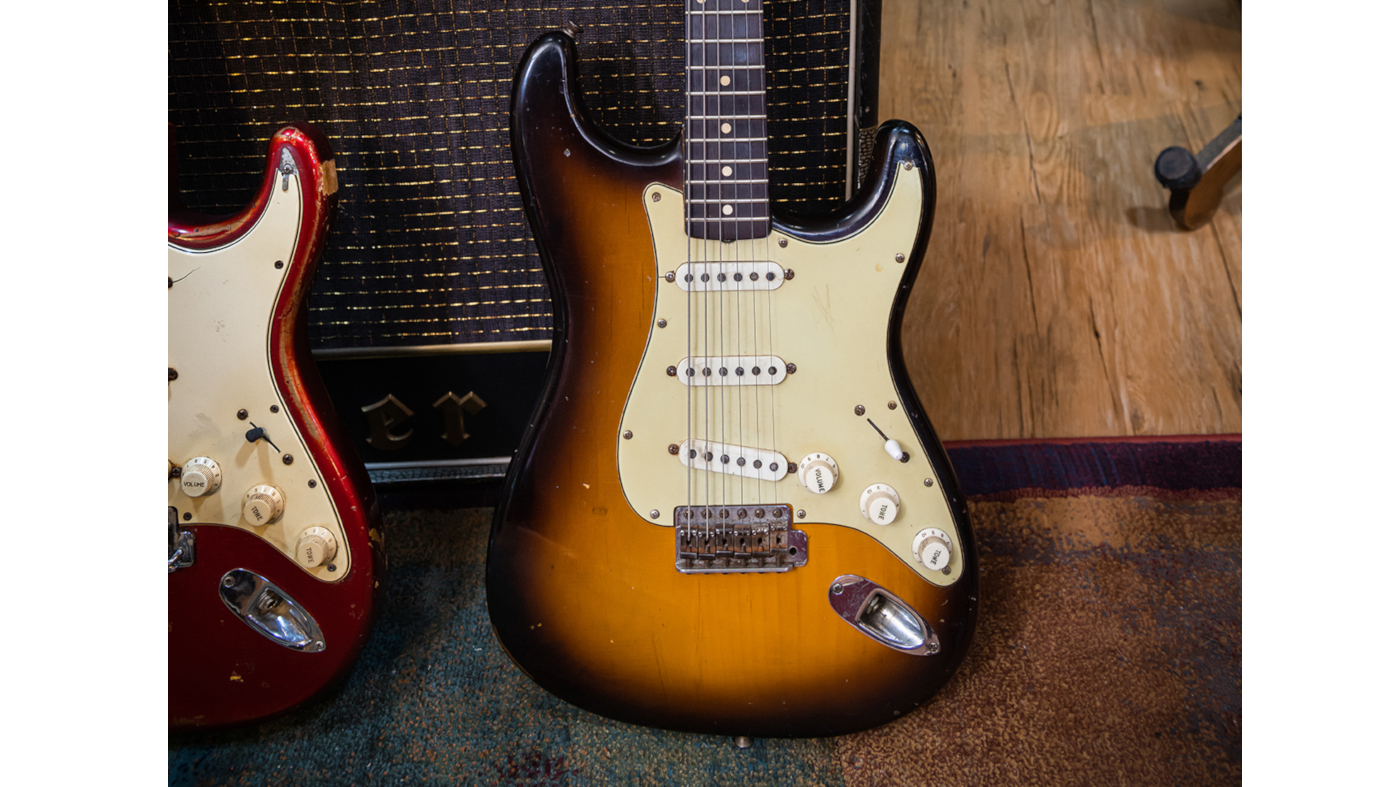
1960 slab-’board Fender Stratocaster
“This guitar has the best-sounding Strat bridge pickup I’ve ever heard,” Richard says of this Faded 3-Tone Sunburst model
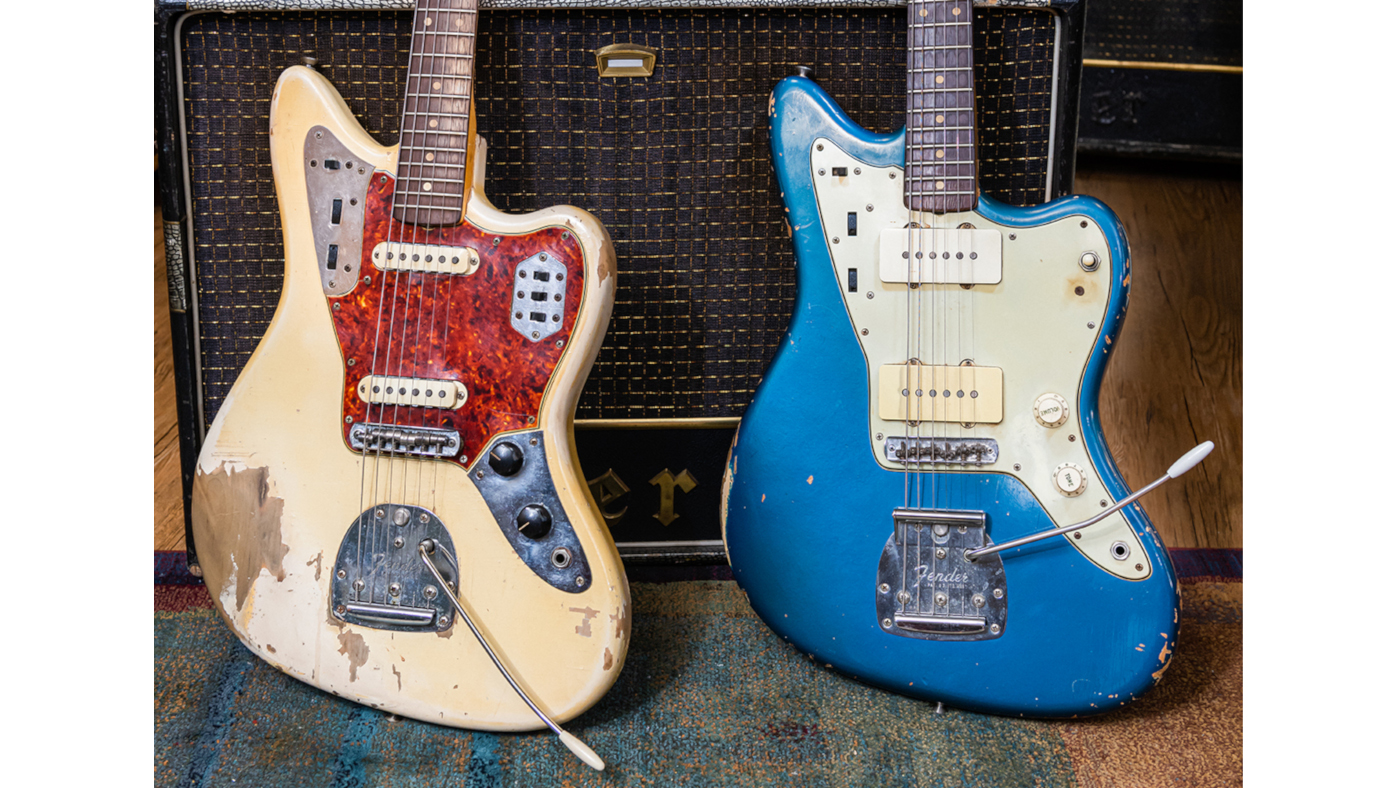
1962 Fender Jaguar & 1962 Jazzmaster
“I love those matching headstocks,” says Richard of this pair of slab-’board offsets in Olympic White (Jaguar) and Lake Placid Blue (Jazzmaster). “The pickups are all stock in those guitars but the Jazzmaster has different covers”
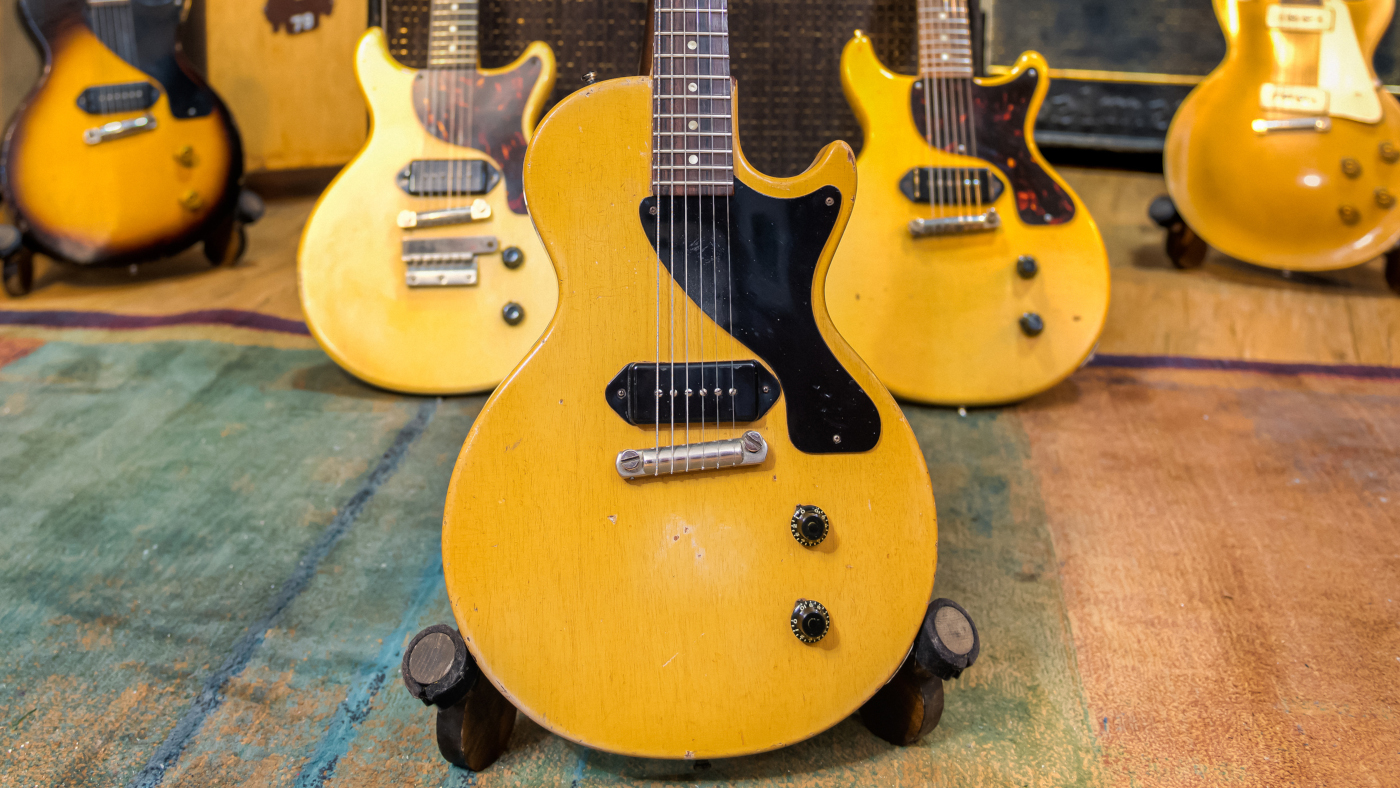
Gibson Les Paul TVs
This trio includes two 1959 double-cuts (the one on the left has been verified by Gibson as previously belonging to Steve Marriott) and the 1955 single-cut that Richard used with Thin Lizzy

1960 ‘dot neck’ Gibson ES-335
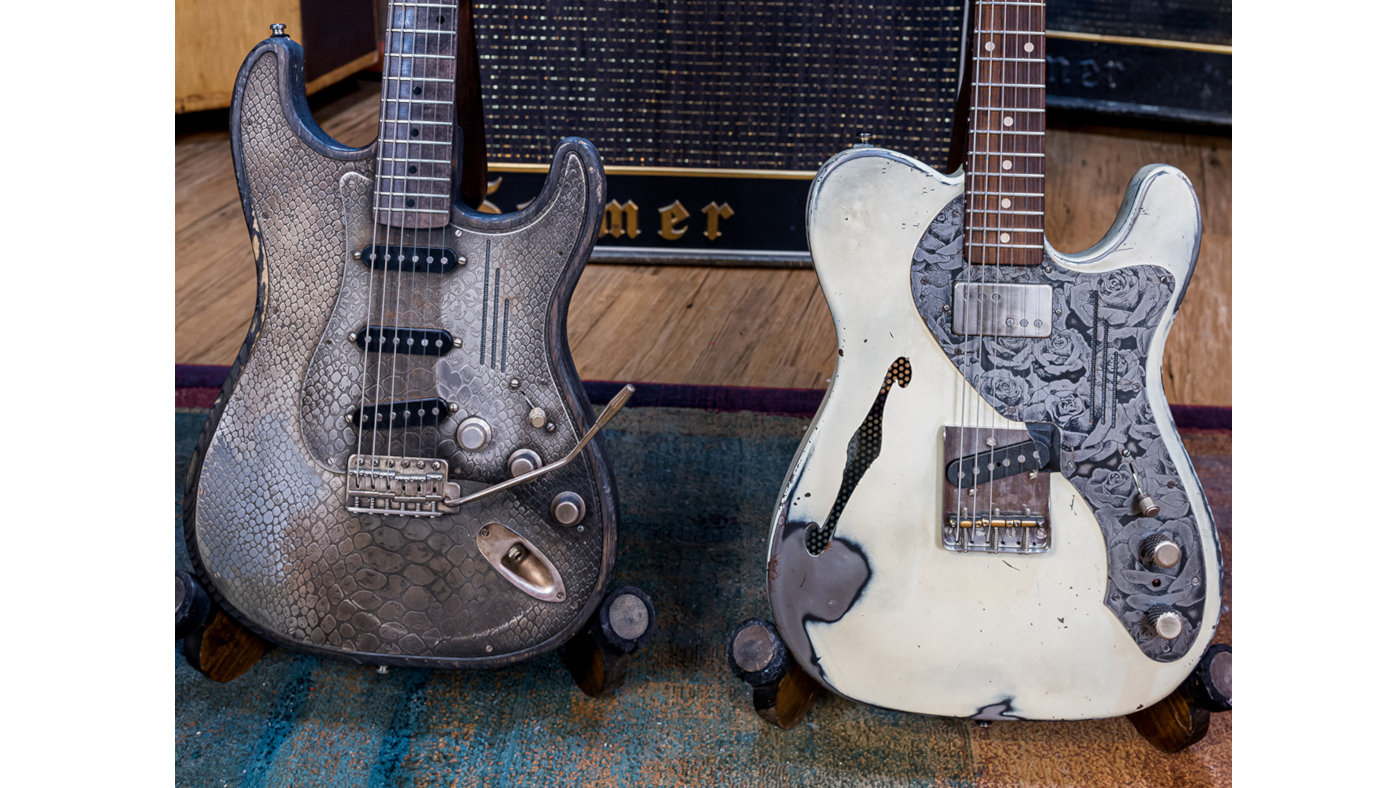
James Trussart Snakeskin Steel-O-Matic signature (left) and Deluxe SteelCaster
Both models have custom-ordered left-handed necks and bridge pickups. Note the Steel-O-Matic’s ‘de-relic’d’ playing wear
Desert island picking
Are you a fan of vintage Gretsches?
“I have friends who are Gretsch aficionados and it seems that ’58 is the year to have. It was the first year of the Filter’Tron and apparently those ones are the shit. I have three ’58s, all in the Chet line: a 6120 [Chet Atkins Hollowbody], a 6119 [Chet Atkins Tennessean] and a 6122 [Chet Atkins Country Gentleman]. When I had the 6122 appraised, they were like, ‘Hey, that serial number is six guitars away from Chet’s!’ I don’t have the 6121 [Chet Atkins Solid Body]. Yet. I have to find that and my ’58 Chet collection will be complete.”
If you had to keep just one guitar from your collection, what would it be?
The ’73 Gibson Les Paul Signature that I bought when I was 20 years old. That is my desert island pick
“The ’73 Gibson Les Paul Signature that I bought when I was 20 years old. That is my desert island pick. In my opinion, the Les Paul Signature is the most underrated Gibson ever. If I’m walking into a session blind, that’s the guitar I’ll bring because it covers so much territory with the low‐/high‐impedance outputs, the phase switch and the mid‐sweep. They sound amazing through a cranked Marshall or direct [line]. My wife asked me, ‘Why is it that the Les Paul Signature is so undervalued?’ and I said, ‘Unless somebody uses it on an iconic album, they don’t have the same appeal.’ People are always chasing a guitar they’re familiar with, or a sound that somebody else got playing it, you know?”
Do you have any other lesser-known models on your favourites list?
“I have a Silvertone [1446] Chris Isaak model and that sounds fantastic. Mini‐humbuckers are such a weird thing to me. They’re all over the map - some of them are just phenomenal sounding and other times they just don’t work. It’s the same thing with Firebird pickups. I’ve got a ’63 Firebird V that I love, but I’ve always wanted a Firebird I; I think they’re the coolest Firebirds.
“I love single‐pickup guitars. I’ve got seven Juniors from the 50s - single‐cuts and double‐cuts - but you know how inconsistent P‐90s are: you can have a bunch of Juniors and they’re all gonna sound completely different. I’ve got two ’59 TV double‐cuts and I’ve got a ’55 TV single‐cut that I played when I was with Thin Lizzy. I love that guitar. That’s my favourite‐sounding [Junior].”
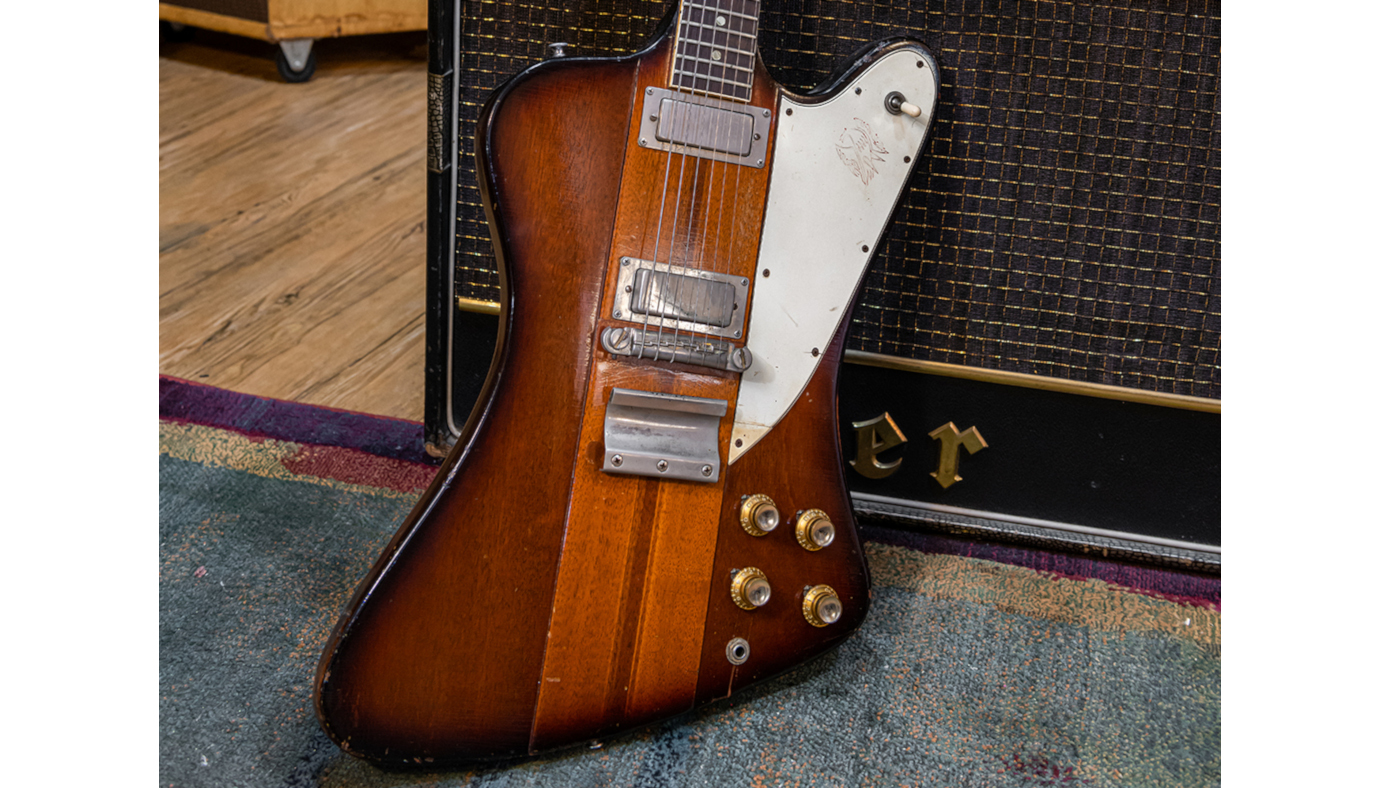
1963 Gibson Firebird V & early 60s crocodile- skin Selmer Zodiac amp
“A great-sounding guitar. That’s my go-to Firebird”
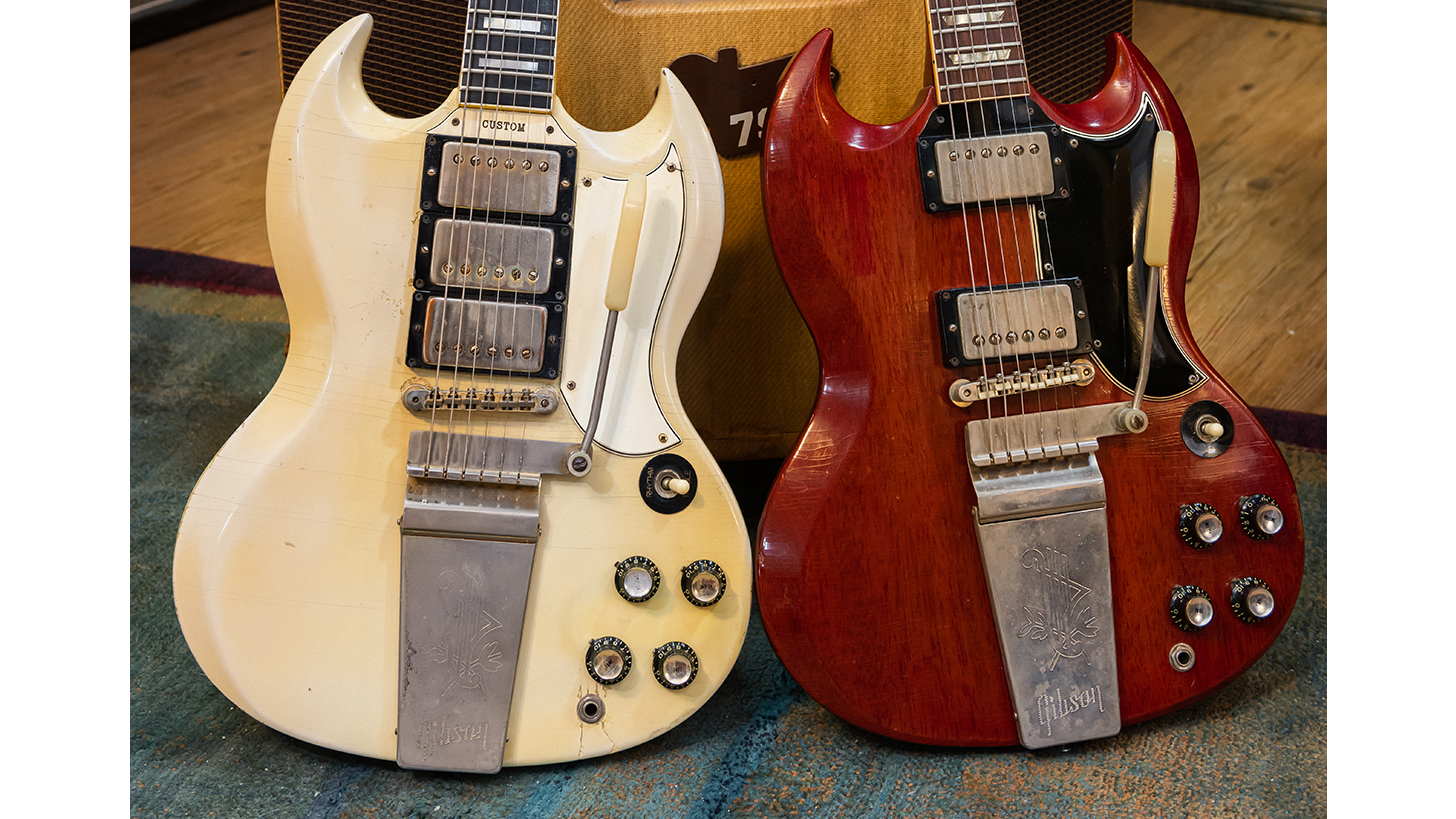
1964 Gibson SG Custom, SG Standard & rare 1961 Gibson GA-79T amp
“Surprisingly, the Custom sounds better than the Standard. The bridge pickup sounds particularly good”
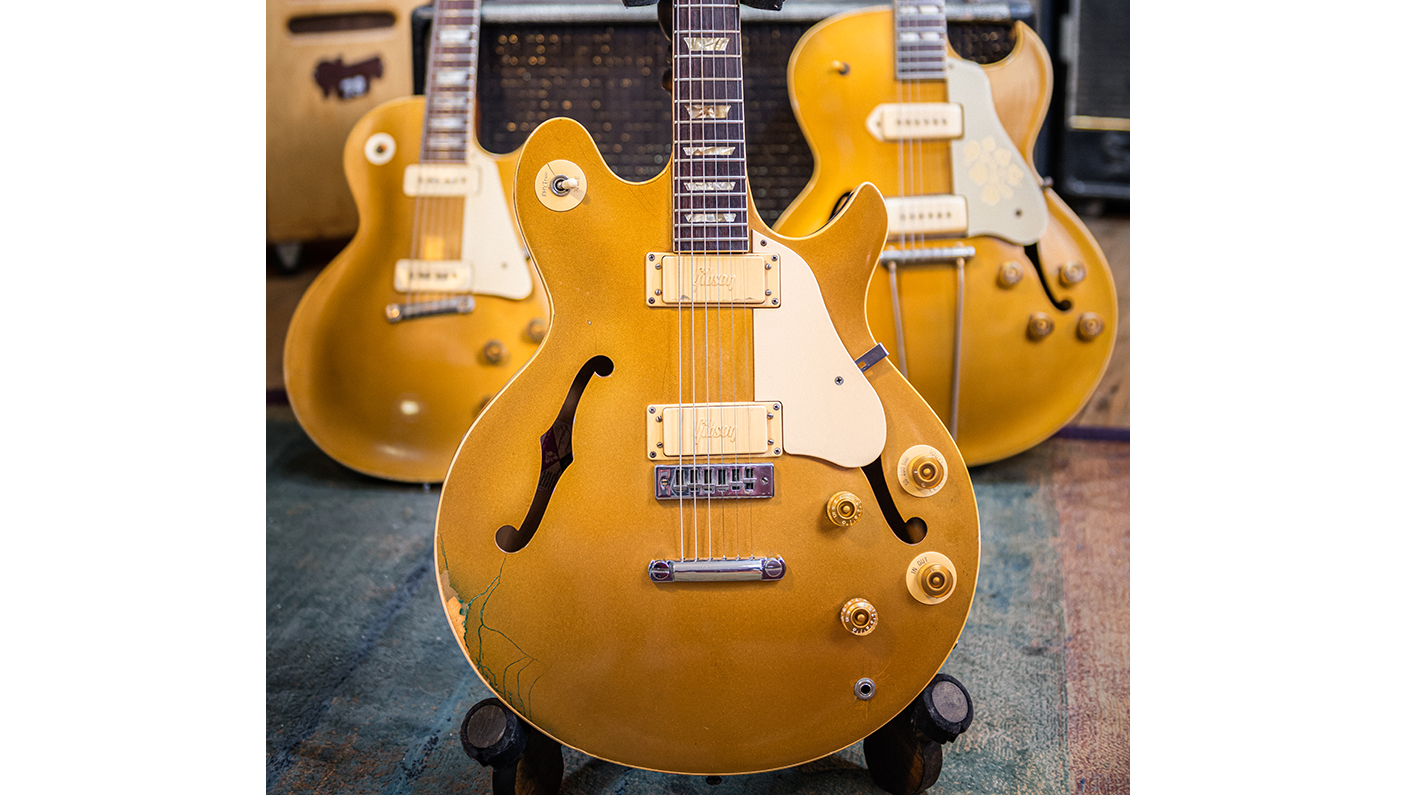
1973 Gibson Les Paul Signature, 1953 LP Model and 1954 ES-295
1973 Gibson Les Paul Signature (centre), 1953 Les Paul Model (left) & 1954 ES-295 (right) Golden-era Gibson in all its aureate glory!
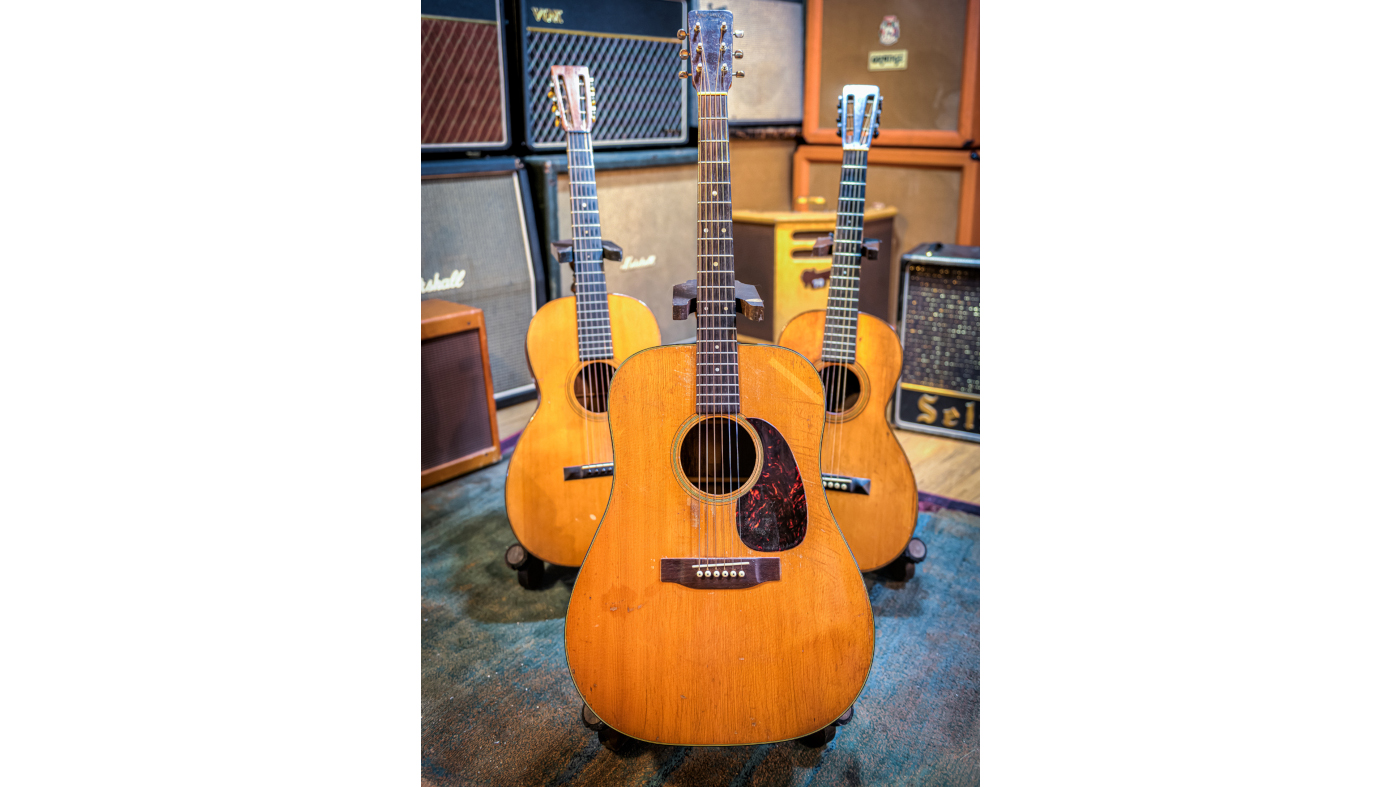
1961 Martin D-21
(Front) flanked by two Brazilian rosewood Martins “The one on the right dates to 1908; the one on the left was made in 1911. They’re made to be played with your fingers and I string them with D’Addario Silk & Steels”

1958 Gretsch Chet Atkins models
Three classic Gretsch Chet Atkins models all from 1958 (l-r): 6119 Tennessean, 6122 Country Gentleman and 6120 Hollow Body
Volume player
You can get a lot of different sounds from Juniors just by using the volume control...
“Using the guitar volume control seems to be a dying art, but for Slash and me, it’s imperative. We play a lot with our fingers - going back and forth between fingers and pick - and we’re always riding the volume. We’re constantly on our volumes. Constantly. You know, finding different sweet spots for that particular moment. Tonally, there’s so much available just on your guitar volume, so I need an amp that’s gonna really help that.”
Using the guitar volume control seems to be a dying art, but for Slash and me, it’s imperative
What amps are you currently using?
“The Supro Black Magick and my Supro signature head. I’m just using a single channel with my pedals and riding the volume control. The Supro signature amp is 100 watts and is based on my ’73 Jose [Arredondo]‐modded Marshall Super Lead that I bought from Mick Mars. I played through about six different Jose‐ modded amps at his house, all of them old Marshalls, and that one was just incredible. I played one chord and I was like, ‘Holy shit!’ The clouds parted, the angels sang, and the light shone down...
“But eventually I decided I didn’t want to tour with that version any more, so I was trying to find somebody that could clone it. Trace [Davis] at Voodoo did a fantastic job. We tweaked it and tweaked it over the years, and then I did the same thing with Supro. I sent them the original Mick Mars/Jose amp and they cloned it, and that’s what I’m touring with now. That’s what’s going to be the new Supro signature amp.”
It’s all about refining your own sound...
“We’re pushed and inspired by our own tone. It’s a private thing. It’s a communication and a conversation between myself and whoever I’m playing with. We’re gonna be playing better because we’re hearing what we want to hear and feeling what we want to feel. That’s why we keep searching for that extra one per cent, right? Playing different guitars with different amps makes you play differently - which is how I think we justify buying so many [laughs]! I want it to sound the way I want it to sound. And I want to be inspired by that sound.”
Rod Brakes is a music journalist with an expertise in guitars. Having spent many years at the coalface as a guitar dealer and tech, Rod's more recent work as a writer covering artists, industry pros and gear includes contributions for leading publications and websites such as Guitarist, Total Guitar, Guitar World, Guitar Player and MusicRadar in addition to specialist music books, blogs and social media. He is also a lifelong musician.
“It’s about delivering the most in-demand mods straight from the factory”: Fender hot-rods itself as the Player II Modified Series rolls out the upgrades – and it got IDLES to demo them
“For some reason, the post office shipped your guitar to Jim Root of Slipknot”: Sweetwater mailed a metal fan's Jackson guitar to a metal legend












